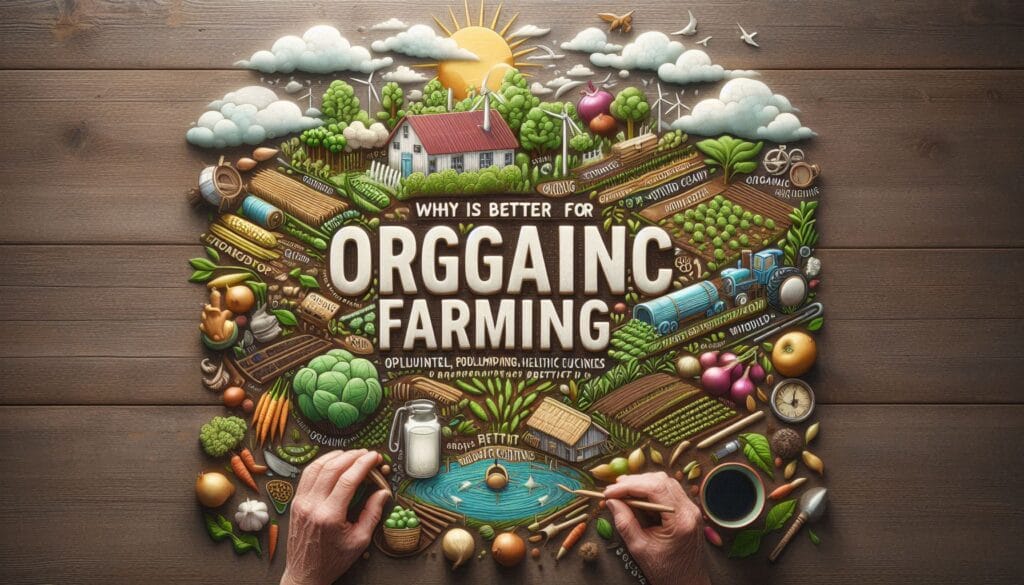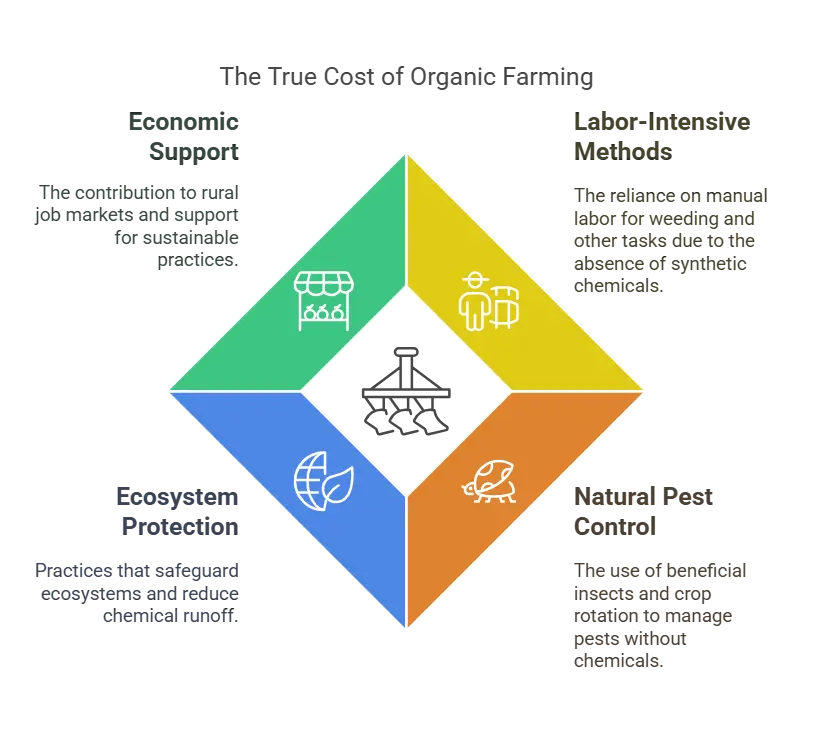Why Is Organic Farming So Expensive? You’ve probably stood in the grocery store aisle, staring at two nearly identical apples: one labeled “organic” with a higher price tag, and the other—conventional—costing half as much. Why does organic food cost more? Is it just a marketing gimmick, or is there something deeper at play?
Turns out, the answer isn’t black-and-white. Organic farming’s higher prices stem from a mix of labor, time, and even politics. But there’s also a flip side: these costs often reflect real value for the environment, our health, and future generations. Let’s dig into the weeds (literally and figuratively) to understand why organic farming is expensive—and why many argue it’s worth every penny.

When we talk about sustainability, we’re really talking about trade-offs. Organic farming prioritizes long-term environmental health over shortcuts. But that commitment comes with a price.
For starters, organic farmers can’t rely on synthetic pesticides or herbicides. Instead of spraying chemicals to kill weeds, they might use manual labor—think workers bent over rows of crops, pulling weeds by hand. According to Boston Organics, this labor-intensive approach can double or even triple production costs compared to conventional methods.

And it’s not just about weeds. Organic pest control often involves introducing beneficial insects (like ladybugs to eat aphids) or rotating crops to disrupt pest life cycles. These methods require careful planning and constant monitoring—tasks that demand time and expertise.
The upside? Sustainable practices protect ecosystems, reduce chemical runoff, and support rural job markets. Every dollar spent on organic food helps fund a system that values people and the planet over profit margins.
Soil Health: Why Organic Farms Take Their Time
Healthy soil is the foundation of organic farming, but building it isn’t quick or easy. Conventional farms often use synthetic fertilizers to pump nutrients into the ground ASAP. Organic farms, however, focus on soil health through natural methods like composting, cover cropping, and crop rotation.

Take crop rotation: planting different crops in succession to replenish nutrients naturally. While this prevents soil degradation, it also means farmers can’t grow high-demand crops year-round. For example, a field might switch from corn (which depletes nitrogen) to legumes (which restore it). The result? Fewer harvests and smaller yields.
| Factor | Organic Farming Organic Farming So Expensive? | Conventional Farming |
|---|---|---|
| Labor | High (manual weeding, pest control) | Low (reliant on chemicals) |
| Yields | 10-25% lower | Higher, consistent output |
| Certification Costs | Up to $2,000/year | None required |
| Subsidies | Minimal or none | Heavily subsidized by governments |
| Environmental Impact | Lower chemical runoff, healthier soil | Higher pollution, soil depletion |
This table highlights a key tension: organic farming’s focus on soil health sacrifices short-term efficiency for long-term resilience. A University of Wisconsin study found that organic soils retain 26% more water during droughts—a huge perk as climate change intensifies. But during “good” years, conventional farms simply produce more food, faster.
Biodiversity: Nature’s Insurance Policy
Conventional farms often resemble monocultures—vast fields of a single crop. Organic farms, by contrast, embrace biodiversity. Diverse crops and wild buffer zones attract pollinators and predatory insects, reducing the need for interventions.
But biodiversity isn’t just about feel-good environmentalism; it’s a practical risk management tool. If pests attack one crop, others might still thrive. The downside? Managing diverse systems is complex. Farmers need expertise in multiple crops and pest cycles, which drives up labor and training costs.
Still, the payoff is significant. Research shows organic farms support 30% more species than conventional ones. That biodiversity isn’t just good for ecosystems—it’s a safety net for food security.
Certification: The Price of Trust
Ever wonder what the USDA Organic label actually means? It’s not just a sticker; it’s a promise. Certification ensures farms meet strict standards: no synthetic pesticides, GMOs, or antibiotics, and humane treatment of animals.
But that promise comes at a cost. Farmers must pay for annual inspections, paperwork, and fees that can hit $2,000+ per year. Smaller farms often struggle with these costs, which is why some opt for local certifications or sell as “uncertified organic” (a risky move, since consumers might not trust it).
There’s also a three-year transition period where farmers must follow organic practices without being able to charge organic prices. As Navitas Organics notes, this delay can sink smaller operations before they even start.
The silver lining? Certification builds consumer trust. In a market flooded with greenwashing, that USDA label offers clarity—and justifies the premium price for farmers.
Subsidies: The Elephant in the (Conventional) Room
Here’s a kicker: your tax dollars are part of why organic food seems pricier. Governments heavily subsidize conventional crops like corn, soy, and wheat, which keeps their prices artificially low. Organic farms? They get less than 1% of USDA funding, despite surging consumer demand.
This imbalance tilts the playing field. Conventional farms can sell cheaply because taxpayers cover their risks (e.g., crop failures, price drops). Organic farmers, meanwhile, shoulder their own risks—and pass those costs to consumers.
So, Is Organic Farming So Expensive? Worth It?
Let’s be real: organic farming is expensive because it accounts for true costs that conventional farming ignores. Those $3 conventional strawberries? They don’t factor in the environmental damage of pesticides, the healthcare costs of antibiotic-resistant bacteria, or the long-term toll on soil.
Organic pricing, in many ways, reflects what food should cost if we value sustainability and health. Yes, it’s a privilege to afford organic—but as demand grows, prices are slowly dropping. Between 2020 and 2022, organic produce sales grew by 12%, outpacing conventional for the first time.
The bottom line? Every organic purchase is a vote for a food system that nourishes people and the planet. It’s not perfect, but it’s a step toward a future where “expensive” organic is the norm—not the exception.

